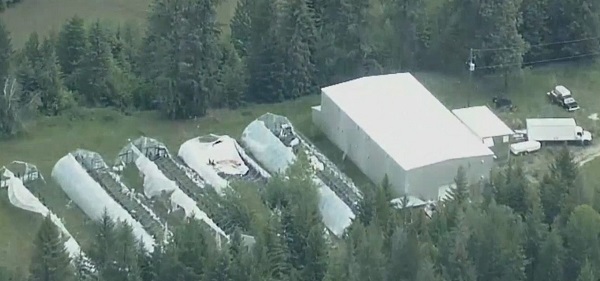Energy
Trump’s Administration Can Supercharge America’s Energy Comeback Even Further


From the Daily Caller News Foundation
By Curtis Schube
One of the first executive orders President Trump issued was “Unleashing American Energy.”
It begins an effort to undo the harm caused by the Biden administration’s unprecedented assault on the American energy sector. It overturns President Biden’s own destructive executive orders, including those canceling oil leases and prioritizing environmental regulations over the good of the economy and producing reliable energy.
It also orders that unduly burdensome energy regulations be rescinded. Trump’s EO forthrightly states that its goal is to encourage energy production “to meet the needs of our citizens and solidify the United States as a global energy leader.”
This executive order takes the nation in a whole new direction. It orders the agencies to audit their policies to weed out burdensome regulations that impact energy development. It terminates the infamous Green New Deal. It prioritizes employment and economic impacts in energy policy. It also revokes a Jimmy Carter Executive Order to reduce the burden on environmental studies that notoriously hold up energy projects.
One reform that met less pomp and circumstance, but is not lacking in impact, is permitting reform. President Trump’s Order instructs agencies to “eliminate all delays within their respective permitting processes including … the use of general permitting and permit by rule.”
This type of permitting reform should impact all American lives for the better. We all know how difficult permits can be to obtain, even if on a smaller scale than energy. When making an addition to a house, for example, one must submit it to government and pray that everything is correct.
Then, the waiting game begins as the government reviews the application, requires possible alterations at the its whim, then, eventually at some point, the project can move forward. It can be expensive and time consuming, and sometimes may deter people from even trying.
The same applies on a larger scale. Permits for major projects, like an oil well, can take years, even a decade or longer, to jump through all of the hoops. And, as the federal government is the gatekeeper to many different varieties of activities that require a permit, whoever is in charge of the executive branch can cripple a project.
Permits by rule and general permits simplify the process drastically and ease the burden on both the applicant and the government. They are simple and predictable. For both types of permits, the government will first pre-determine the required criteria for someone to meet before the permitted conduct can commence. The government will promulgate the standards for all to see and know.
The applicant, knowing exactly what is required to perform the permitted conduct, can get a project moving quickly. For a general permit, no contact with the government is even needed. A permittee can begin a project so long as it satisfies the pre-set standards.
For a permit by rule, the applicant simply has to certify to the government, in writing, that all the criteria have been met. In response, the government can only check to see if the correct certifications are made and then either approve it or return the certifications with an explanation of which ones are not met. This is done in a short period of time, such as 30 days.
In both cases, the government has no discretion on a case-by-case basis. Instead of focusing its efforts as a gatekeeper for permits, the government will only focus on permittees who have not met the criteria, but after the permittee has begun its project. The government’s role is focused on enforcement actions.
Both sides benefit from this system. For those who behave correctly, the permitting process does not hold up projects. For the government, the resource drain for overseeing permitting is drastically reduced. The government only has to focus its attention on the minority of parties.
This system also has a built-in deterrent. If a permittee were to begin a project, only to have the government shut the project down at a later time through an enforcement action, the permittee would lose a significant investment.
The true benefit is to the American people. If energy companies can have a quick and expedited form of permitting, then the supply of energy can expand quicker. This makes the cost of energy, and all products, cheaper. In the wake of natural disasters, rebuilding can happen quicker. Infrastructure can be put in place faster. The benefits go on and on.
Permitting reform, such as that referenced in President Trump’s Executive Order, is a fantastic first step toward a more efficient government. His agencies should take full advantage and convert as many permits as possible to a permit by rule or general permit as soon as possible.
Curtis Schube is the Executive Director for Council to Modernize Governance, a think tank committed to making the administration of government more efficient, representative, and restrained. He is formerly a constitutional and administrative law attorney.
Alberta
Alberta’s grand bargain with Canada includes a new pipeline to Prince Rupert

From Resource Now
Alberta renews call for West Coast oil pipeline amid shifting federal, geopolitical dynamics.
Just six months ago, talk of resurrecting some version of the Northern Gateway pipeline would have been unthinkable. But with the election of Donald Trump in the U.S. and Mark Carney in Canada, it’s now thinkable.
In fact, Alberta Premier Danielle Smith seems to be making Northern Gateway 2.0 a top priority and a condition for Alberta staying within the Canadian confederation and supporting Mark Carney’s vision of making Canada an Energy superpower. Thanks to Donald Trump threatening Canadian sovereignty and its economy, there has been a noticeable zeitgeist shift in Canada. There is growing support for the idea of leveraging Canada’s natural resources and diversifying export markets to make it less vulnerable to an unpredictable southern neighbour.
“I think the world has changed dramatically since Donald Trump got elected in November,” Smith said at a keynote address Wednesday at the Global Energy Show Canada in Calgary. “I think that’s changed the national conversation.” Smith said she has been encouraged by the tack Carney has taken since being elected Prime Minister, and hopes to see real action from Ottawa in the coming months to address what Smith said is serious encumbrances to Alberta’s oil sector, including Bill C-69, an oil and gas emissions cap and a West Coast tanker oil ban. “I’m going to give him some time to work with us and I’m going to be optimistic,” Smith said. Removing the West Coast moratorium on oil tankers would be the first step needed to building a new oil pipeline line from Alberta to Prince Rupert. “We cannot build a pipeline to the west coast if there is a tanker ban,” Smith said. The next step would be getting First Nations on board. “Indigenous peoples have been shut out of the energy economy for generations, and we are now putting them at the heart of it,” Smith said.
Alberta currently produces about 4.3 million barrels of oil per day. Had the Northern Gateway, Keystone XL and Energy East pipelines been built, Alberta could now be producing and exporting an additional 2.5 million barrels of oil per day. The original Northern Gateway Pipeline — killed outright by the Justin Trudeau government — would have terminated in Kitimat. Smith is now talking about a pipeline that would terminate in Prince Rupert. This may obviate some of the concerns that Kitimat posed with oil tankers negotiating Douglas Channel, and their potential impacts on the marine environment.
One of the biggest hurdles to a pipeline to Prince Rupert may be B.C. Premier David Eby. The B.C. NDP government has a history of opposing oil pipelines with tooth and nail. Asked in a fireside chat by Peter Mansbridge how she would get around the B.C. problem, Smith confidently said: “I’ll convince David Eby.”
“I’m sensitive to the issues that were raised before,” she added. One of those concerns was emissions. But the Alberta government and oil industry has struck a grand bargain with Ottawa: pipelines for emissions abatement through carbon capture and storage.
The industry and government propose multi-billion investments in CCUS. The Pathways Alliance project alone represents an investment of $10 to $20 billion. Smith noted that there is no economic value in pumping CO2 underground. It only becomes economically viable if the tradeoff is greater production and export capacity for Alberta oil. “If you couple it with a million-barrel-per-day pipeline, well that allows you $20 billion worth of revenue year after year,” she said. “All of a sudden a $20 billion cost to have to decarbonize, it looks a lot more attractive when you have a new source of revenue.” When asked about the Prince Rupert pipeline proposal, Eby has responded that there is currently no proponent, and that it is therefore a bridge to cross when there is actually a proposal. “I think what I’ve heard Premier Eby say is that there is no project and no proponent,” Smith said. “Well, that’s my job. There will be soon. “We’re working very hard on being able to get industry players to realize this time may be different.” “We’re working on getting a proponent and route.”
At a number of sessions during the conference, Mansbridge has repeatedly asked speakers about the Alberta secession movement, and whether it might scare off investment capital. Alberta has been using the threat of secession as a threat if Ottawa does not address some of the province’s long-standing grievances. Smith said she hopes Carney takes it seriously. “I hope the prime minister doesn’t want to test it,” Smith said during a scrum with reporters. “I take it seriously. I have never seen separatist sentiment be as high as it is now. “I’ve also seen it dissipate when Ottawa addresses the concerns Alberta has.” She added that, if Carney wants a true nation-building project to fast-track, she can’t think of a better one than a new West Coast pipeline. “I can’t imagine that there will be another project on the national list that will generate as much revenue, as much GDP, as many high paying jobs as a bitumen pipeline to the coast.”
Alberta
Alberta Premier Danielle Smith Discusses Moving Energy Forward at the Global Energy Show in Calgary

From Energy Now
At the energy conference in Calgary, Alberta Premier Danielle Smith pressed the case for building infrastructure to move provincial products to international markets, via a transportation and energy corridor to British Columbia.
“The anchor tenant for this corridor must be a 42-inch pipeline, moving one million incremental barrels of oil to those global markets. And we can’t stop there,” she told the audience.
The premier reiterated her support for new pipelines north to Grays Bay in Nunavut, east to Churchill, Man., and potentially a new version of Energy East.
The discussion comes as Prime Minister Mark Carney and his government are assembling a list of major projects of national interest to fast-track for approval.
Carney has also pledged to establish a major project review office that would issue decisions within two years, instead of five.








